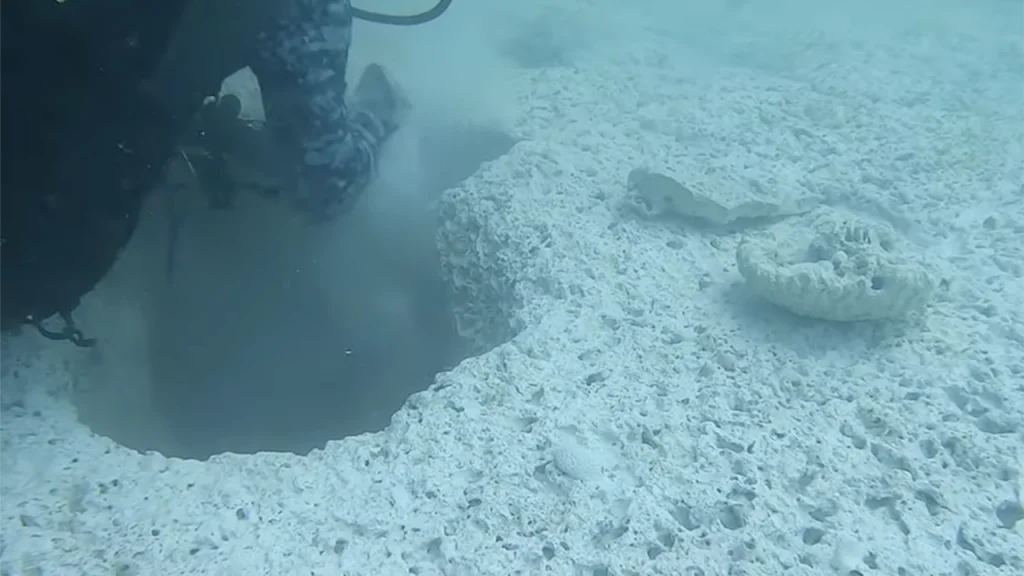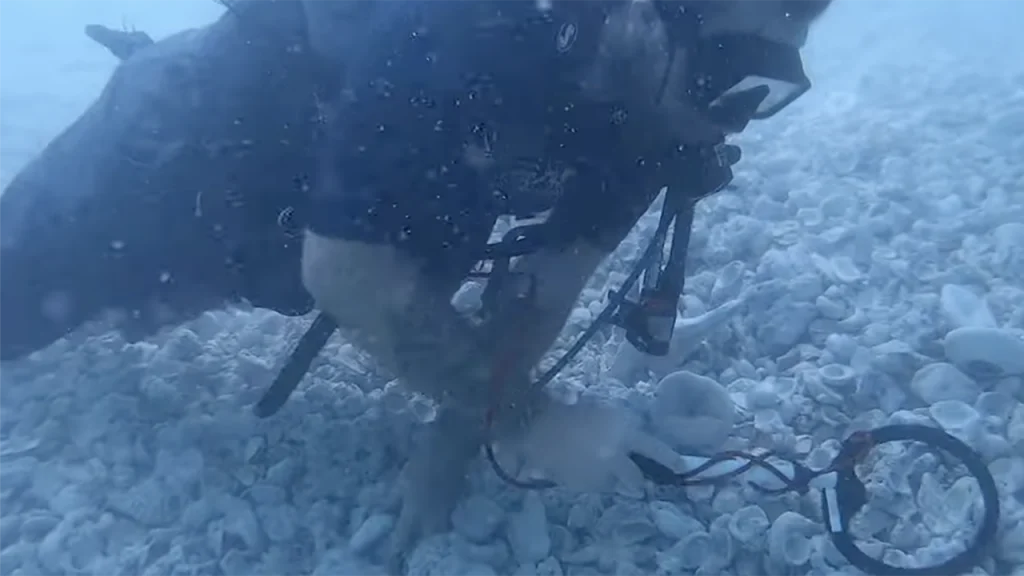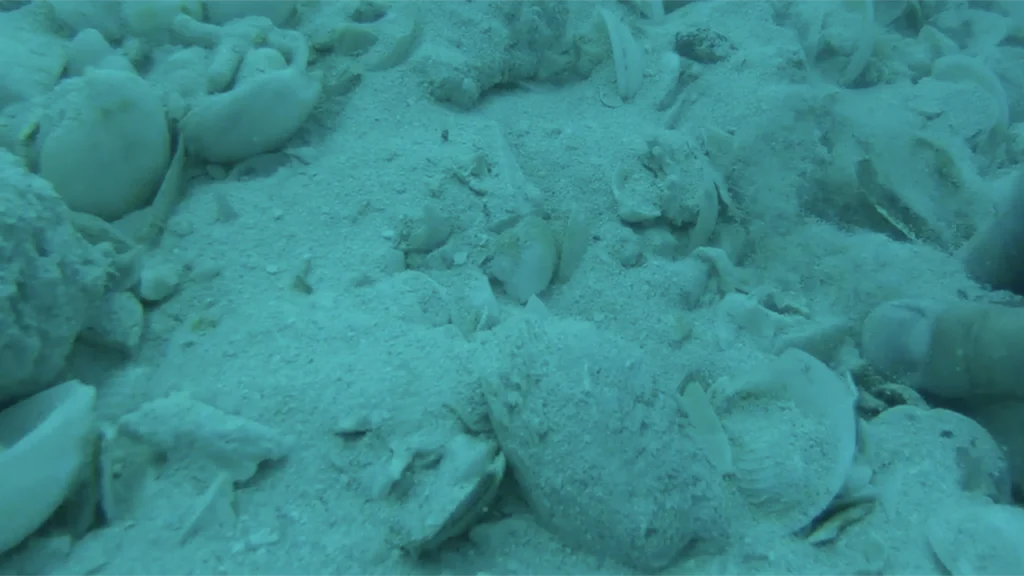Table of Contents

Today, the Atocha wreck is celebrated not only for its treasure but also for its historical significance. It represents a pivotal moment in maritime history, highlighting the dangers of treasure hunting and the impact of natural disasters on sea voyages. The legacy of the Atocha continues to captivate treasure hunters, historians, and divers alike, ensuring that its story endures for future generations.
Article at a Glance
- Historical Background: The Atocha, a Spanish galleon, sank in 1622 during a hurricane while transporting a vast treasure from the New World to Spain.
- Location and Coordinates: The wreck is located off the Florida Keys, specifically at coordinates approximately 24°31.5′ N latitude and 82°20.0′ W longitude.
- Depth: The Atocha wreck lies at a depth of about 55 feet (17 meters), making it accessible for recreational divers.
- Treasure Details: The ship was laden with gold, silver, and emeralds, with an estimated treasure value of over $400 million, much of which has been recovered since its discovery.
- Diving Experience: Divers can explore the wreck site, which has become an artificial reef, attracting a variety of marine life and providing a unique underwater experience.
- Diving Operators: Guided dives to the Atocha wreck are offered by licensed operators, including Mel Fisher’s Atocha Adventure, ensuring safety and compliance with salvage regulations.
- Conservation Efforts: The site is protected under salvage laws, and divers are encouraged to respect the wreck and its surrounding marine environment during their visits.
Atocha Wreck Location Coordinates and Depth
Depth
The wreck lies in about 55 feet (approximately 17 meters) of water, with parts of the ship, such as the top of its mast, visible at the surface.
Location Coordinates
The Atocha wreck, officially known as Nuestra Señora de Atocha, is located at coordinates approximately 24°31.5′ N latitude and 82° 20.0′ W longitude.
What to Scuba Divers Say About This Wreck
- Access and Salvage Rights: Many divers note that access to the Atocha wreck is restricted due to salvage rights held by Queen Jewels LLC, which limits how close divers can get to the actual wreck site. This has led to discussions about the legalities of diving near the area and the potential for treasure hunting.
- Diving Conditions: The Atocha wreck is spread over a large area and is often buried under sand, making it difficult for divers to locate specific parts of the wreck. Some divers have mentioned that the visibility can vary, and the wreck’s condition means that finding artifacts is not guaranteed.
- Expectations for Divers: Divers often express mixed expectations regarding artifact recovery. While some hope to find treasures, many emphasize the experience of diving at such a historic site as the primary goal. They suggest setting expectations to appreciate the dive itself rather than focusing solely on treasure hunting.
- Historical Significance: The Atocha is recognized as one of the most valuable shipwrecks in history, which adds to the allure for divers. The wreck is not only a site for potential treasure but also a place of significant historical interest, making dives there memorable for many.
What Kind of Marine Life Can Be Found on The Wreck
- Fish Species: The area is home to numerous fish, including snapper, grouper, and barracuda. These species often seek shelter among the wreckage and the surrounding coral formations.
- Invertebrates: Divers have noted the presence of various invertebrates, such as sea urchins, starfish, and sponges. These organisms contribute to the biodiversity of the wreck site.
- Coral Growth: Over time, coral has begun to colonize the wreck, providing habitat for smaller marine organisms and enhancing the ecological value of the site.
- Other Marine Life: Divers have also reported sightings of larger marine animals, such as sea turtles and rays, which are often attracted to the structure of the wreck and the surrounding marine environment.
Key Information
| Key Information | Details |
|---|---|
| Wreck Name | Nuestra Señora de Atocha |
| Location | Off the coast of the Florida Keys |
| Coordinates | Approximately 24°31.5′ N, 82°20.0′ W |
| Depth | About 55 feet (17 meters) |
| Historical Significance | Sank in 1622 while carrying treasure from the New World |
| Treasure Recovered | Includes gold, silver, emeralds, and artifacts |
| Diving Operators | Mel Fisher’s Atocha Adventure, Queen Jewels LLC |
| Diving Conditions | Varies; visibility and currents can affect dives |
| Access Restrictions | Guided tours required; salvage rights held by Queen Jewels LLC |
| Marine Life | Diverse species including snapper, grouper, and more |
What Makes Atocha a Unique Diving Experience
- Historical Significance: The Atocha is one of the most famous shipwrecks in history, having sunk in 1622 while carrying a significant treasure from the New World. Divers are drawn to the opportunity to explore a site with such rich historical context and the allure of uncovering artifacts from the past.
- Treasure Hunting Adventure: Many divers participate in expeditions led by Mel Fisher’s team, which has made numerous significant discoveries over the years. The thrill of potentially finding gold, silver, and other treasures adds an exciting dimension to the dive, making it more than just a recreational activity.
- Ecological Experience: The Atocha wreck has transformed into an artificial reef, attracting diverse marine life. Divers can encounter various species of fish, corals, and invertebrates, enhancing the underwater experience with both historical and ecological elements.
- Diving Challenges: The wreck is spread over a large area and often buried under sand, making it a challenging dive site. This unpredictability adds to the adventure, as divers must navigate the conditions and search for remnants of the wreck.
- Limited Access: Due to salvage rights held by Queen Jewels LLC, access to the wreck is restricted, which can create a sense of exclusivity. Divers often discuss the legalities and logistics of getting close to the site, adding an additional layer of intrigue to the experience.

What is The Full History of This Wreck
Construction and Purpose
Nuestra Señora de Atocha was constructed in 1620 for the Spanish Crown and was part of the Tierra Firme Fleet, which was responsible for transporting valuable goods from the New World to Spain. The ship was heavily armed and designed to carry precious cargo, including silver, gold, and other treasures, which were crucial for Spain’s wealth during the 15th to 17th centuries. Atocha was named after the Basilica of Nuestra Señora de Atocha in Madrid, reflecting its significance to the Spanish monarchy.
The Fateful Voyage
On September 4, 1622, Atocha set sail from Havana, Cuba, as part of a fleet of 28 ships carrying immense wealth. The fleet was delayed for several weeks, and on September 6, disaster struck when a powerful hurricane hit the Florida Straits. The storm caused eight ships to sink, including Atocha, which was heavily laden with treasure—estimated to be worth between $250 million and $500 million today. The ship sank approximately 140 kilometers from Havana, taking with it 265 crew members and passengers. Only five individuals survived by clinging to the ship’s mizzenmast.
Early Salvage Attempts
Immediately after the wreck, Spanish salvagers attempted to recover the treasure but faced challenges due to the ship’s depth (about 55 feet) and the tightly sealed hatches. Over the next 60 years, various salvage efforts were made, but the Atocha remained elusive, and memories of the wreck faded as other ships, like the Santa Margarita, were salvaged instead.
Rediscovery and Recovery
The story of the Atocha took a significant turn in the 20th century with advancements in diving technology. In 1969, treasure hunter Mel Fisher began a relentless search for the Atocha, using innovative techniques and equipment. After years of searching, Fisher’s team discovered the wreck on July 20, 1985. The find was monumental, revealing a treasure trove that included silver bars, gold coins, emeralds, and other artifacts, making it one of the most significant shipwreck discoveries in history.
The Treasure
The treasure recovered from the Atocha included 24 tons of silver bullion, 180,000 pesos in silver coins, 125 gold bars, and various other valuable items. The total estimated value of the treasure recovered was around $450 million, with a large portion still believed to be undiscovered. The artifacts recovered from the wreck are now housed in various museums and collections, showcasing the rich history of Spanish maritime exploration and trade.
Legacy
Today, the Atocha wreck is celebrated not only for its treasure but also for its historical significance. It represents a pivotal moment in maritime history, highlighting the dangers of treasure hunting and the impact of natural disasters on sea voyages. The legacy of the Atocha continues to captivate treasure hunters, historians, and divers alike, ensuring that its story endures for future generations.

What Historical Features Can Still Be Identified on Wreck
Structural Remnants
- Hull and Masts: The wreck lies in approximately 55 feet of water, with parts of the ship’s hull still visible. The top of the mast was reportedly seen during early salvage attempts, indicating the original structure of the ship.
- Cannons: Several bronze cannons have been recovered from the wreck, showcasing the ship’s armament. These cannons are remnants of the ship’s defensive capabilities, reflecting the naval warfare of the era.
Artifacts
- Coins and Precious Metals: A significant number of coins, known as “cobs,” have been recovered. These coins were minted in the New World and bear the marks of Spanish royalty, providing insight into the economic activities of the time. Many coins are from the mints of Potosi and Mexico City, dating back to the reigns of Philip II and Philip III.
- Emeralds and Jewelry: Colombian emeralds, particularly from the famed Muzo mine, have been found among the treasures. These gems were highly valued and often used in royal jewelry, indicating the wealth that the Atocha was transporting.
- Personal Items: Various personal artifacts, including pottery, silverware, and tools, have been recovered, offering a glimpse into the daily lives of those aboard the ship.
Historical Context
- Ship’s Design: The Atocha was a typical 17th-century galleon, characterized by its high sterncastle, high forecastle, and square-rigged sails. The design elements still observable in the wreck provide insights into shipbuilding techniques of the time.
- Surrounding Debris Field: The wreck site is scattered over a large area due to the impact of the hurricane that caused its sinking and subsequent storms that further dispersed the debris. This field includes remnants of other ships from the same fleet, contributing to the historical narrative of maritime trade and disaster in the 17th century.
Ongoing Exploration
While much of the treasure has been recovered, parts of the wreck, such as the stern castle and captain’s cabin where more treasures are believed to be stored, remain undiscovered. This ongoing quest for artifacts continues to attract treasure hunters and researchers, ensuring that the Atocha’s story is far from over.
What Safety Measures Are in Place for Divers Visiting Atocha Wreck
- Restricted Access: The Atocha wreck is under the salvage rights of Queen Jewels LLC, which means that unauthorized diving near the wreck is prohibited. Divers must adhere to these restrictions to avoid legal issues and ensure the preservation of the site.
- Guided Tours: To dive near the Atocha wreck, divers typically need to participate in guided tours organized by licensed operators, such as Mel Fisher’s company. These tours provide experienced guides who are familiar with the area, enhancing safety and ensuring compliance with regulations.
- Pre-Dive Briefings: Divers are usually given thorough pre-dive briefings that cover safety protocols, the history of the wreck, and specific instructions regarding the dive site. This preparation helps divers understand the environment and potential hazards.
- Equipment Checks: Operators often conduct equipment checks to ensure that all diving gear is in good condition, which is crucial for diver safety.
- Emergency Procedures: Dive operators typically have established emergency procedures in place, including communication protocols and access to first aid equipment. Divers are informed about these procedures during the pre-dive briefing.
- Environmental Awareness: Divers are educated about the importance of preserving the wreck and its surrounding marine environment. This includes guidelines on how to interact with the site responsibly, minimizing impact on the wreck and marine life.
Dive Shops That Provide Diving Trips to This Shipwreck
- Mel Fisher’s Atocha Adventure: This is the most prominent operator, providing divers with the opportunity to dive the Atocha wreck. They offer guided trips and treasure hunting experiences, allowing participants to explore the historic site while adhering to safety and legal regulations. More information can be found on their official website.
- Queen Jewels LLC: This company holds the salvage rights to the Atocha wreck site. While they primarily focus on treasure recovery, they also provide opportunities for divers to join expeditions under their supervision.





